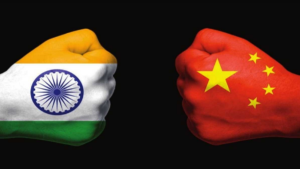The Indian government has focused on giving China a befitting reply on the border dispute through economic sanctions. The idea of “boycott China” is resonating within the country. A closer look at the economic relations between the two countries will help us in understanding the feasibility of the boycott plan.
Nationalism was never defunct in any era. The cautious nations have promoted nationalism for establishing their dominance over other countries. The world started adopted globalisation in the mid-1980s. India adopted it from 1 July 1991. Most developing countries invited global invasion in the era of globalisation. This helped industrialised countries move seamlessly to other countries and allowed them to expand their markets.
In the last 20 years China has slowly captured our market. Our trade with China is not bilateral. After the United States, China is the second largest trade partner of India. We are importing from China things which we can manufacture in India or are manufactured in India at higher costs. China has captured the TV and smartphones market in India. If we talk about the TV market, around 45% is captured by Chinese products. In the telecom sector, China has a control over 25% of the market. Other items of imports from China include electronic gadgets, plastics, iron and steel products and automobile parts. An interesting thing to note is that in the past one year, we exported iron and steel worth Rs 3,900 crore and bought back Chinamade finished products at around Rs 12,000 crore. Repackaging is an important business strategy of China. Chinese companies have investments in Big Basket, Zomato, Paytm, Swiggy, etc. These companies have given employment to a large number of Indians. China has destroyed our domestic industries through cheap dumping. The rise of Chinese nationalism led to the emergence of domestic industries in China which eventually led to their dominance in the world.
Today, China has the highest contribution of about 21.5% in world manufacturing. Japan has a contribution of 10% in world manufacturing. We have less than 3% contribution in world manufacturing. In the era of globalisation, we invited foreign investments as a result of it more than 3/4th of the manufacturing units of the organised sector became foreign owned. When we used to make Kelvinator refrigerators, we used to make iron ore, piston, cylinder, compressor and everything used for refrigerators. As a result, it generated employment in the downstream value chain. Japan is the best example of economic nationalism. Japanese buy only ‘Made by Japan’ products. Only 4% of the foreign manufactured automobiles are sold in Japan and 96% is sold by Japanese companies. Another historical example is of the camera rolls. Kodak (American) and Fuji (Japanese) were two popular camera rolls in the world. Due to better quality Kodak rolls had a market share of 70% in the world but in Japan only Fuji was sold. In the late 1990s Kodak halved its price as compared to Fuji in Japan. Still no Japanese purchased Kodak rolls. Only the foreign tourists used to buy it and carry back to their own country.
We invited huge foreign direct investment (FDI) in the country but only little was invested in the other countries. Inbound direct investment is 3-times larger than outbound direct investment. We are the world’s second largest mobile manufacturer but only 4% value addition takes place in India and 96% value is manufactured outside the country.
The way out
In the era of economic nationalism, we have to promote import substitution. We have to start domestic manufacturing. We have to remove technological backwardness in the industrial clusters of the country. India needs to take advantage of reverse globalisation promoting “Made by India” products and not ‘Made in India’. Made in India promotes assembly lines. A good example of ‘Made by India’ products is Tata’s buses and trucks. Sweden used to make buses and trucks (Volvo, Scania, etc) for the whole world. They planned to launch 400 horsepower (HP) buses and trucks in the world. Tata countered them by purchasing Daewoo (a South Korean company having 40% market share in South Korea in 400 HP buses) and launched Tata Daewoo Novus series. Today, Tata Group is manufacturing Novus series in 39 countries. Before the takeover Tata’s 95% buses and trucks were sold in India only. Policy interventions and manufacturing ecosystems need to be developed. If we don’t develop state-ofart manufacturing facilities, we will export employment. Sectors in which we are not self-dependent, then industrial consortiums can be promoted. One very fascinating example of an industrial consortium is Europe. When all the passenger aircrafts like Boeing, Lockheed Martin, etc, were made in the US, Europe promoted the Airbus consortium of four countries — England, France, Spain and Germany. Different parts were made in different countries. Today it has become Airbus Corporation.
In the changed scenario, several companies of the world are moving out of China and looking at India as a better destination. We need to improve our trade practices. Boycotting China will only be successful if the needed boost is provided to Indian industry, economy, business and trade. Alternatives should focus on cheap products and generating employment opportunities. If a toy car is made in India, then dye mould, enamelled wire, copper wire, etc, will be needed. This will generate downstream value chain and value addition leading to employment generation. Today around 1.25 crore youth in India enter the job market every year. If they have to be made employable, then domestic manufacturing has to be enhanced. Economic boycott means a loss of about Rs 5 lakh crore for China. This is where it hurts China the most. Chinese loss will lead to loss of employment in China. It will also hurt Chinese economy. China needs to be taught a lesson. However, it should be remembered that economic distancing from China is easier said than done.
With the world’s 20% youth and a market of 16.7% of the world’s population, we can emerge as an industrial, commerce, agriculture and services hub. Economic nationalism and techno nationalism can help us stand among the top economic powers of the world. In the current situation China can face tension on borders but not an economic war. The changed scenarios of reverse globalisation have given India a chance to again be the “Vishwa Guru”.
Siddharth Singh is assistant professor in Department of Economics in DAV, Banaras Hindu University, Varanasi. Kunwar Pushpendra Pratap Singh is a journalist and expert of international relations and strategic affairs.













